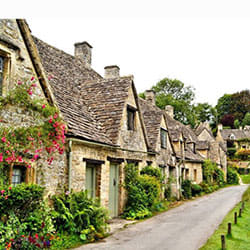It’s been over a year since the coronavirus pandemic began around late March of 2020. It’s now late April of 2021, and Mexico, like many other countries, is still struggling. Mexico reported 3,818 new cases on April 28—17% of the peak daily infections on January 20. A medical professional that my husband knows says that the hospitals have recently opened up quite a bit, to the point that they’ve actually been able to take some time off to relax at home—so I guess it’s safe to say that things are really settling down. But although the drop in cases is good news, it was reported that when they recalculated the coronavirus death toll a month ago, it rose by 60%. The new figures give Mexico, at 321,000, the second-highest death toll in the world after the US. But because Mexico’s population is far smaller than the US (128 million versus 327 million), it seems worse here. People also point out that because of the lack of testing in Mexico, the actual number of deaths is probably higher—and the shortage of intensive care beds in some Mexican states means that many people likely died at home.
On April 24, the COVID-19 risk levels reported in Mexico were orange in six states (including Mexico City), yellow in twenty states, and green in six states. None are red, but Mexico City is still at orange (the next level down) and ideally schools and kindergartens don’t open until it’s green—though in certain cases they even plan to open at yellow. For more than a year now, all classes from kindergarten to college have been held online, most companies have people working from home, and some of those companies are apparently planning to continue having people work remotely even after the pandemic is over. Some of the employees of those companies have moved out of Mexico City to other states, and I even know someone personally that also did. A popular destination has been safe, convenient Mérida in Yucatán. I doubt that many Japanese people have heard of it, but it’s a beautiful town and one of the safest places in Mexico—which is why it’s so popular.
In terms of coronavirus precautions, Mexico has of course promoted mask-wearing, hand-washing, and sanitizer. At certain points during the pandemic, cafés and restaurants only offered takeout service, but now people can eat outside or even inside at reduced capacity. Supermarkets and shopping malls separated their entrances and exits, and requiring temperature checks and the use of sanitizer before people can go in has become common practice. Even now, some stores only allow one person per family to enter. On November 18 of last year, a QR-code tracking system was introduced to record store entry (people are asked to scan a QR code when they go in so that their cell phone number can be recorded). Many of the tourist destinations in Mexico City are closed, and the plazas and other areas where people tend to congregate are closed off. The direct ANA flights between Japan and Mexico City have resumed their usual seven flights a week, but Aeroméxico announced that their Japan flights would remain grounded until the end of June.
Some parks are closed, but most of them can be used in the same way as before. Still, there are so many people on holidays that social distancing is difficult, and some people don’t wear masks—or worse, make a bunch of noise without wearing them when watching the street performers. President López Obrador attended press conferences and inspections without masking. It was announced on January 24 of this year that he contracted the coronavirus, and fortunately got by with a mild case—so perhaps that’s why he hasn’t worn a mask since. The president has been criticized for downplaying the seriousness of the pandemic, delaying the vaccine rollout, and demanding that shopping malls and department stores take protective measures on their own while forcing them to endure long closures—without offering the companies any support.
Healthcare workers began receiving their vaccines on December 24, and it was announced that everyone aged 50–59 would be eligible in the first week of May. Side effects aside, Mexico doesn’t even know which country’s vaccines it’s getting—so I haven’t even decided whether I’ll get one when I’m able. It’s hard to believe, but there are cases where nurses are only pretending to give people shots but are in fact stealing the vaccines, or of younger people posing as the elderly in order to get them. Despite all these problems, however, cases are going down, so I’m keeping my guard up while hoping that things return to normal as soon as possible.
- 2021.05.24
- Mexico a year after the start of the coronavirus pandemic






























































